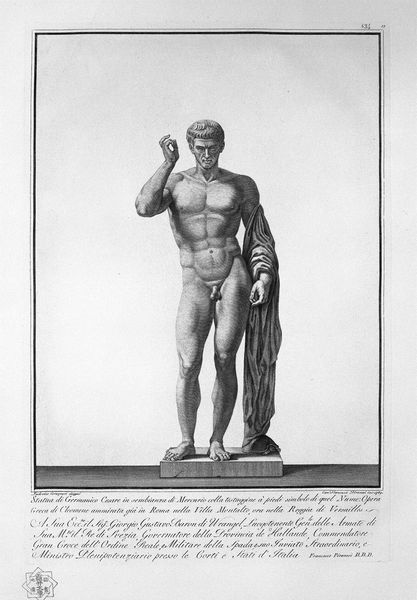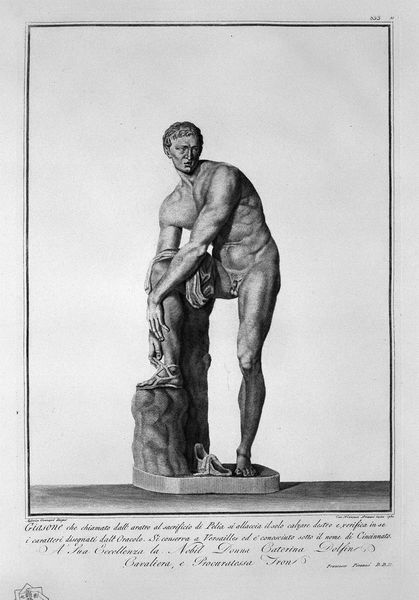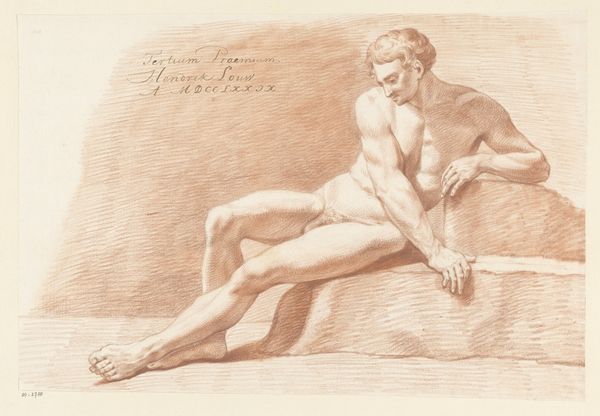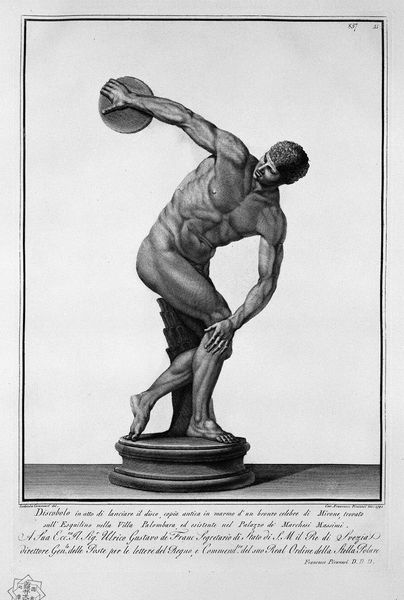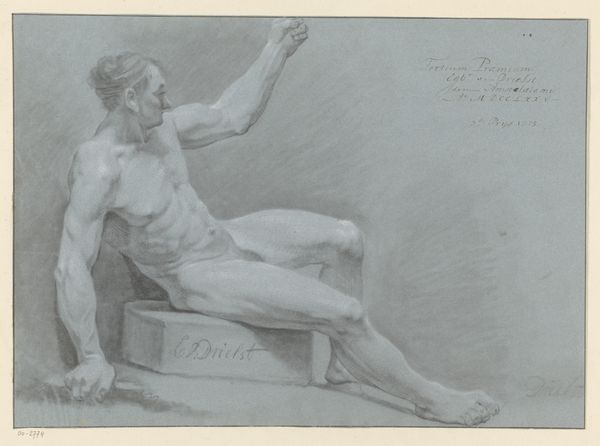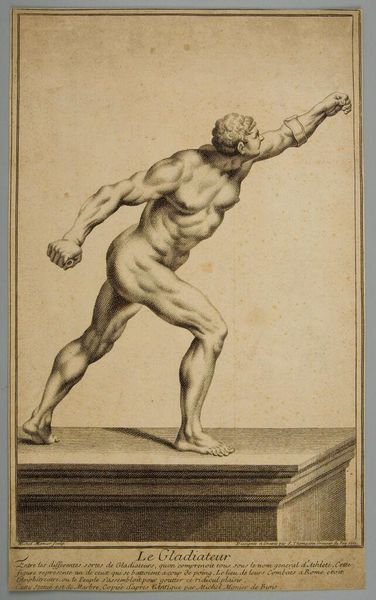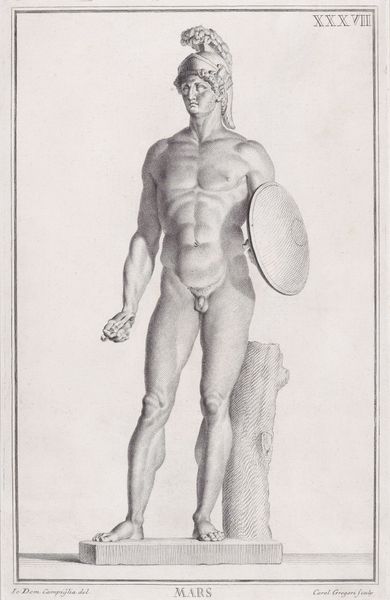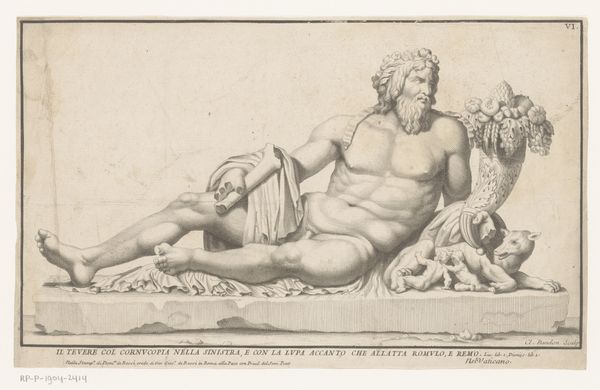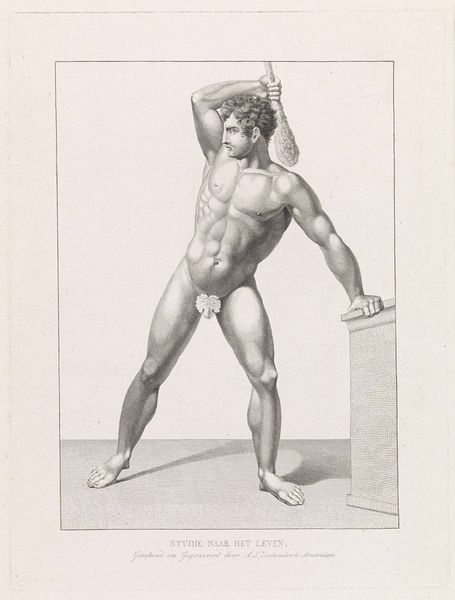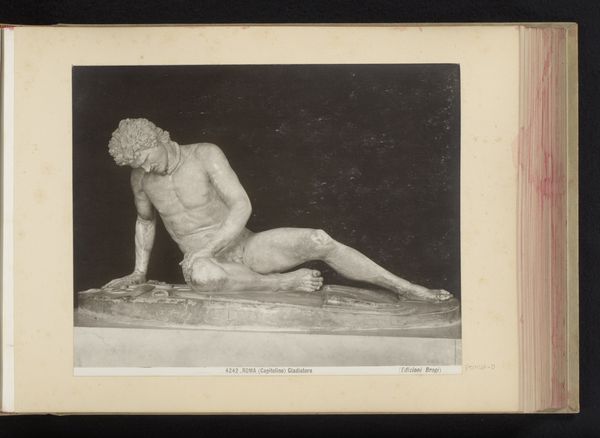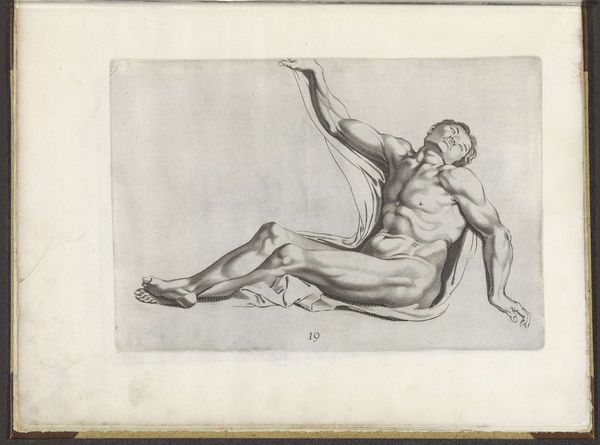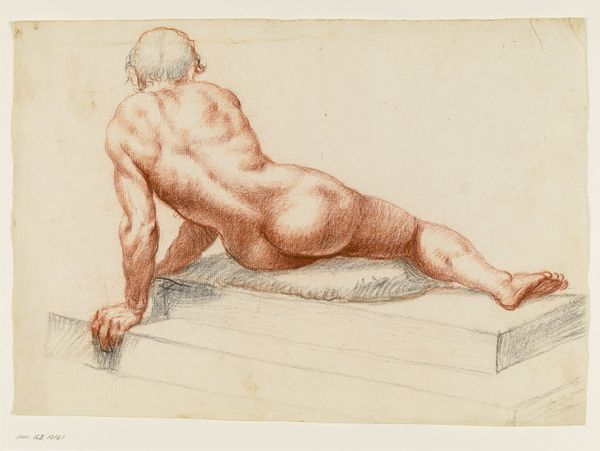
#
pencil drawn
#
facial expression reference
#
statue
#
facial expression drawing
#
portrait image
#
charcoal drawing
#
portrait reference
#
strong emotion
#
yellow element
#
limited contrast and shading
#
men
#
portrait drawing
Copyright: Public domain
Editor: So this is "Gallo dying", a drawing by Giovanni Battista Piranesi. It looks like a study of a classical sculpture, and I'm immediately drawn to the figure’s pose – a mix of strength and vulnerability. What do you see in this piece, beyond just a classical figure study? Curator: Well, consider the historical context. Piranesi was working in a time of burgeoning colonialism, where European elites were appropriating and reimagining classical aesthetics. The “dying gladiator” became a symbol. Editor: A symbol of what, exactly? Curator: Think about power structures. Who gets to define heroism, strength, and even beauty? Was this simply an objective representation, or was Piranesi participating in a broader narrative that served certain political agendas? Consider that gladiatorial combat involved enslaved peoples, their pain often romanticized. Piranesi's focus on this specific subject becomes politically loaded when considering who had access to viewing and celebrating such works. Who benefited from them? What's visible and what's obscured? Editor: I see what you mean. The romanticized vision could serve to erase the realities of those who suffered in these spectacles. The suffering isn't truly being confronted. Curator: Exactly. And it encourages us to think critically about how historical events are presented. Even something that looks purely aesthetic is often deeply entangled with issues of power and representation. So, who do you think this work speaks *for*? Editor: It gives me a lot to think about, that's for sure. It definitely pushes you to look beyond the beauty and into a more complex view.
Comments
No comments
Be the first to comment and join the conversation on the ultimate creative platform.
